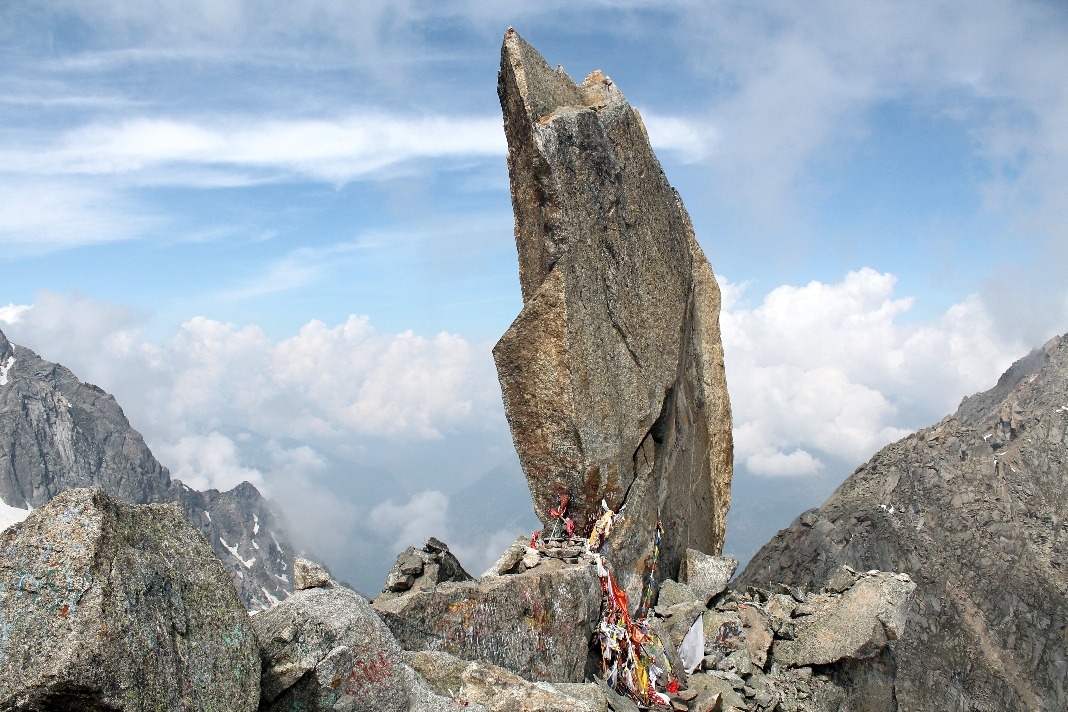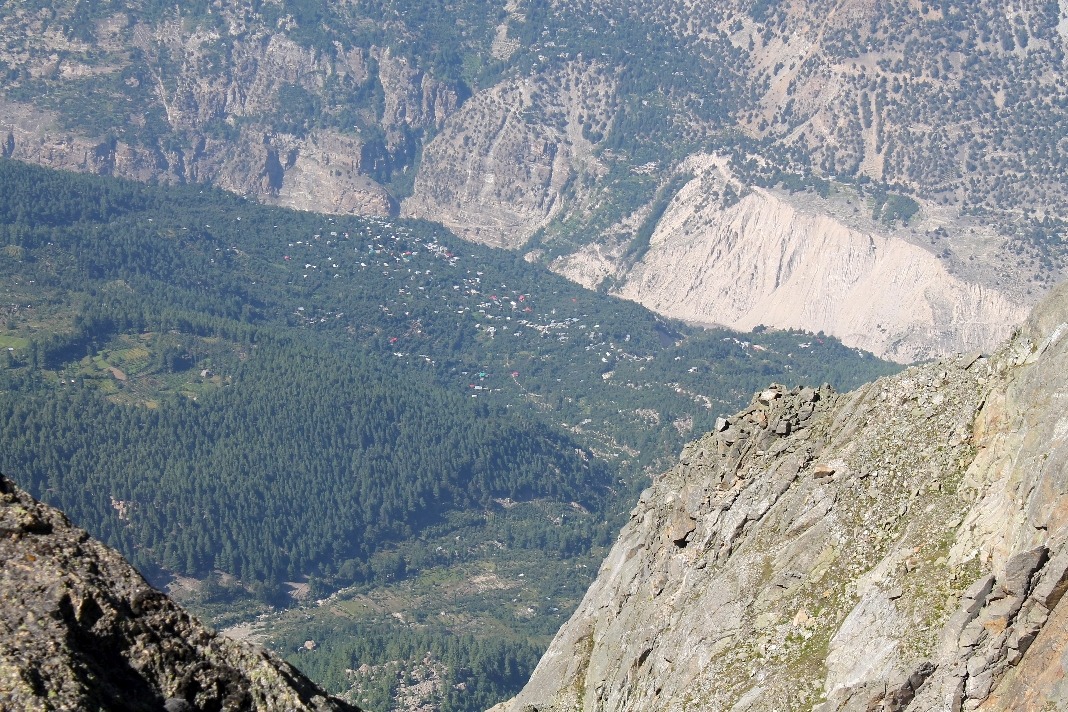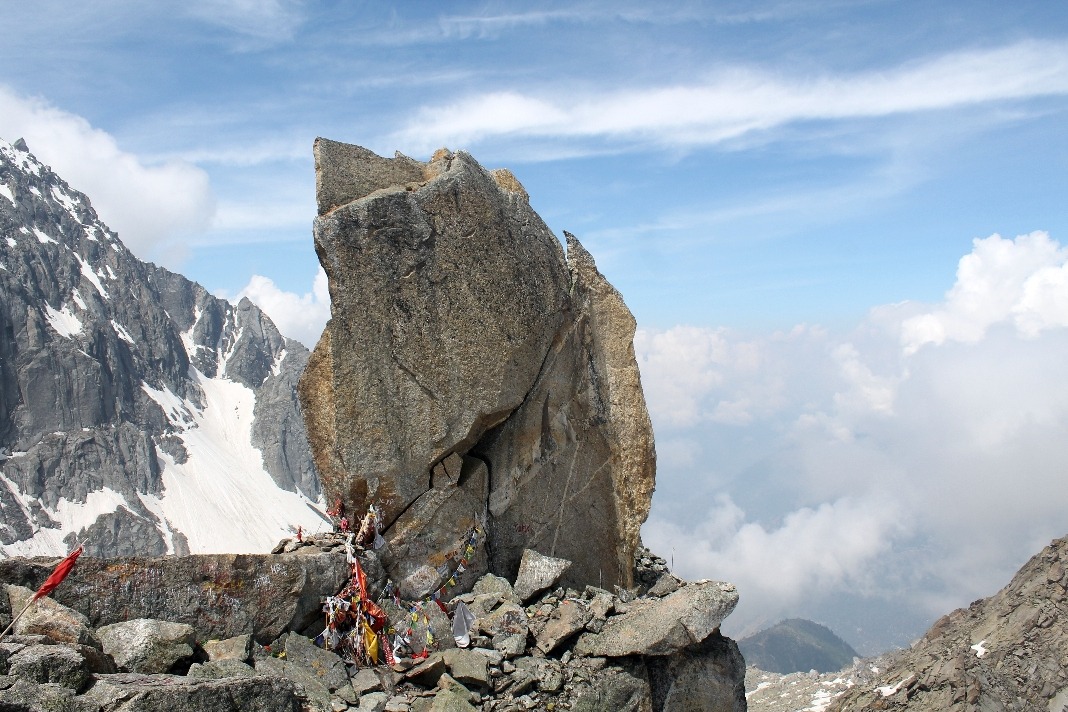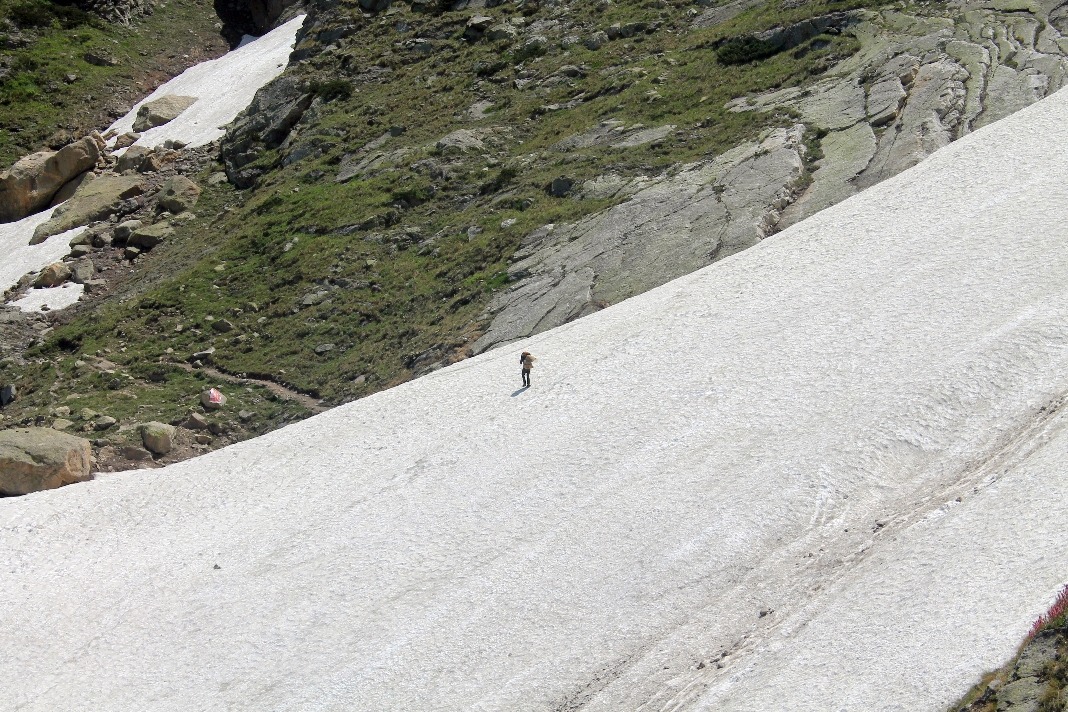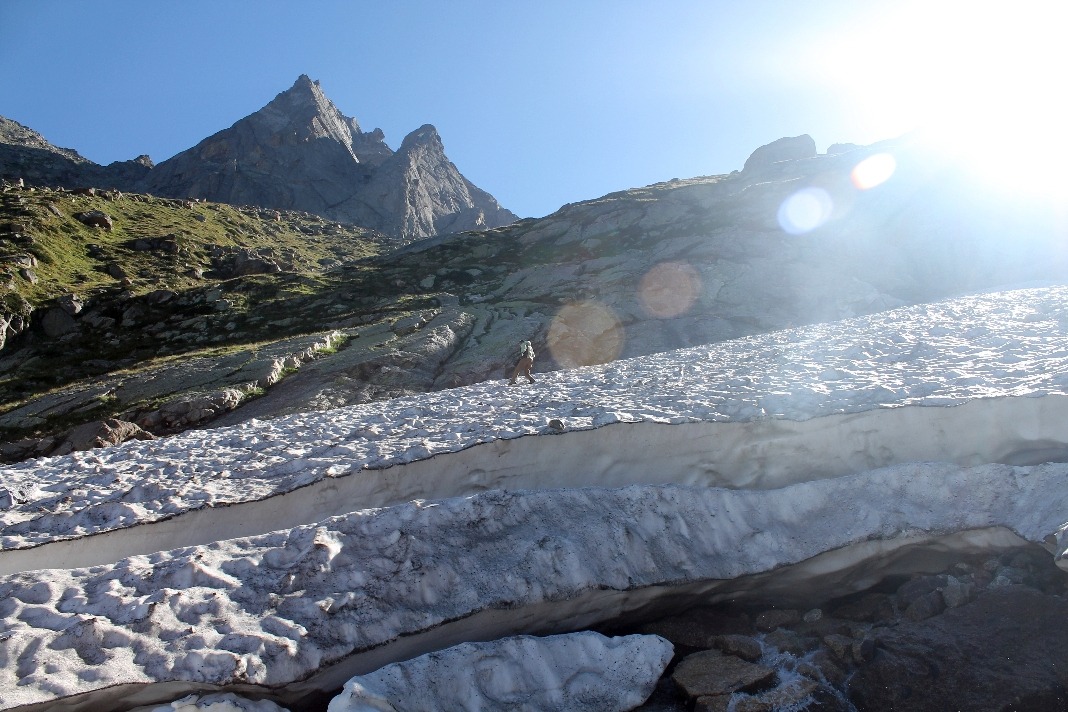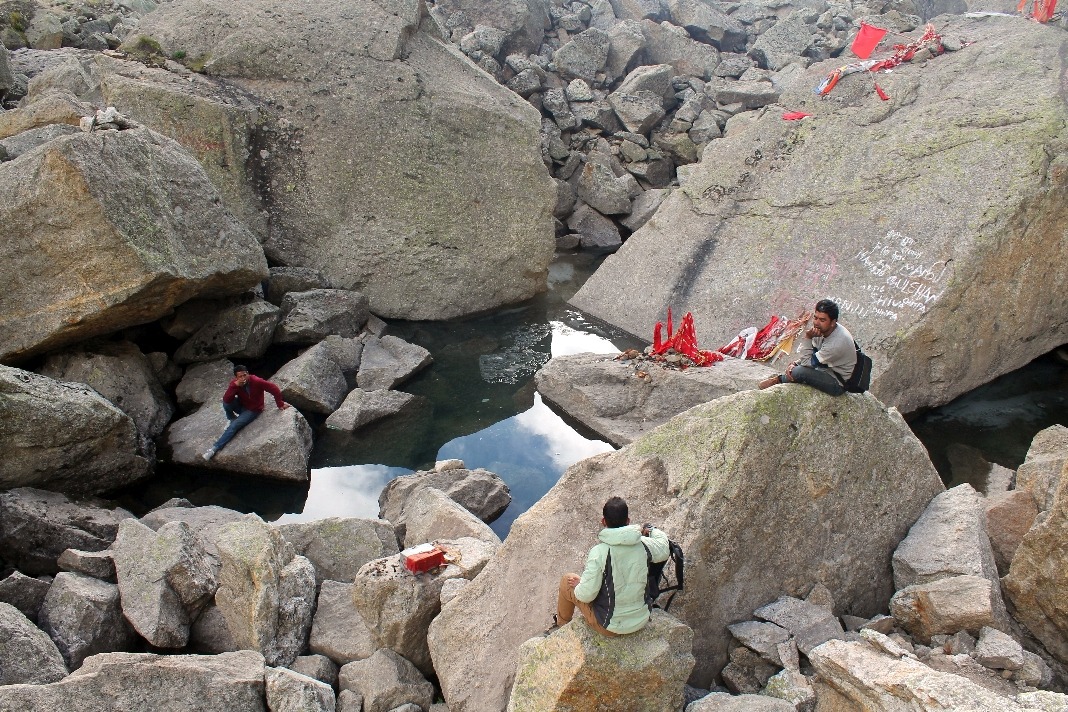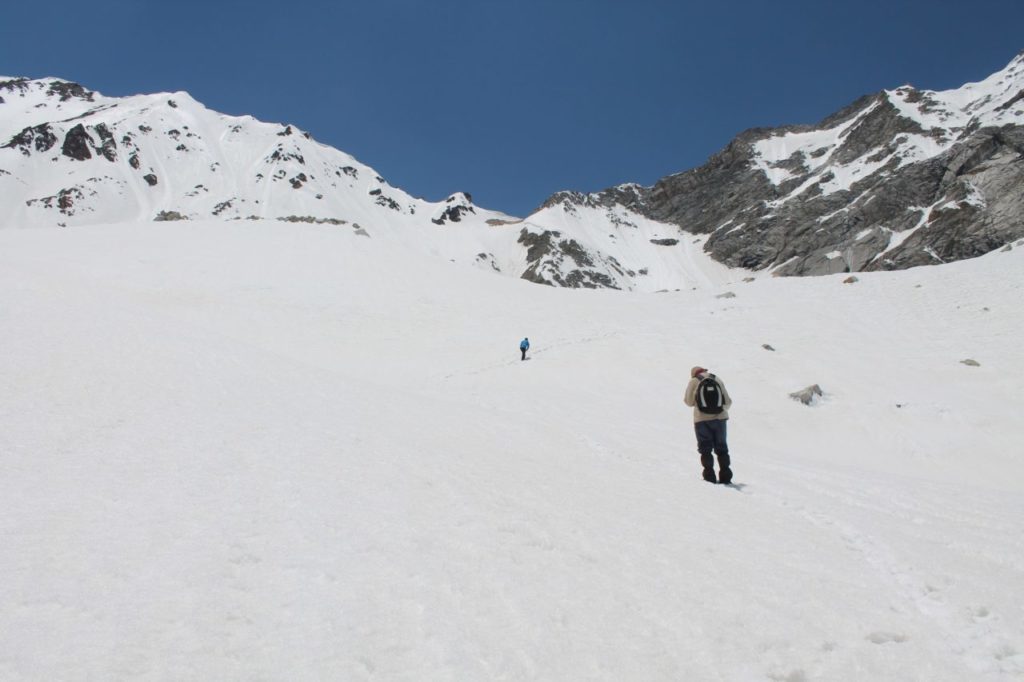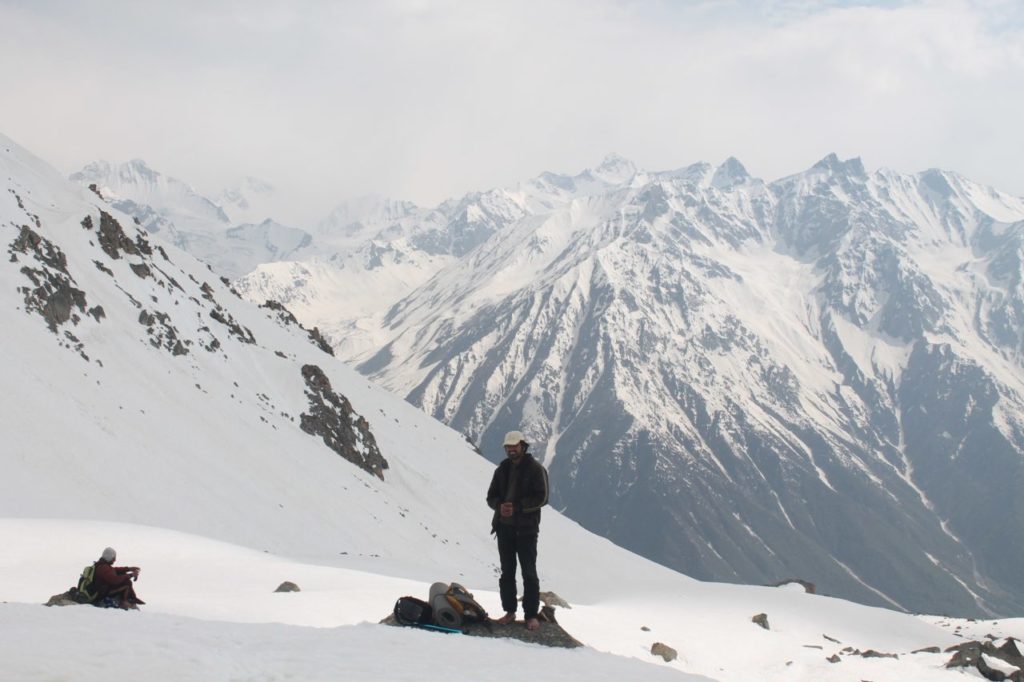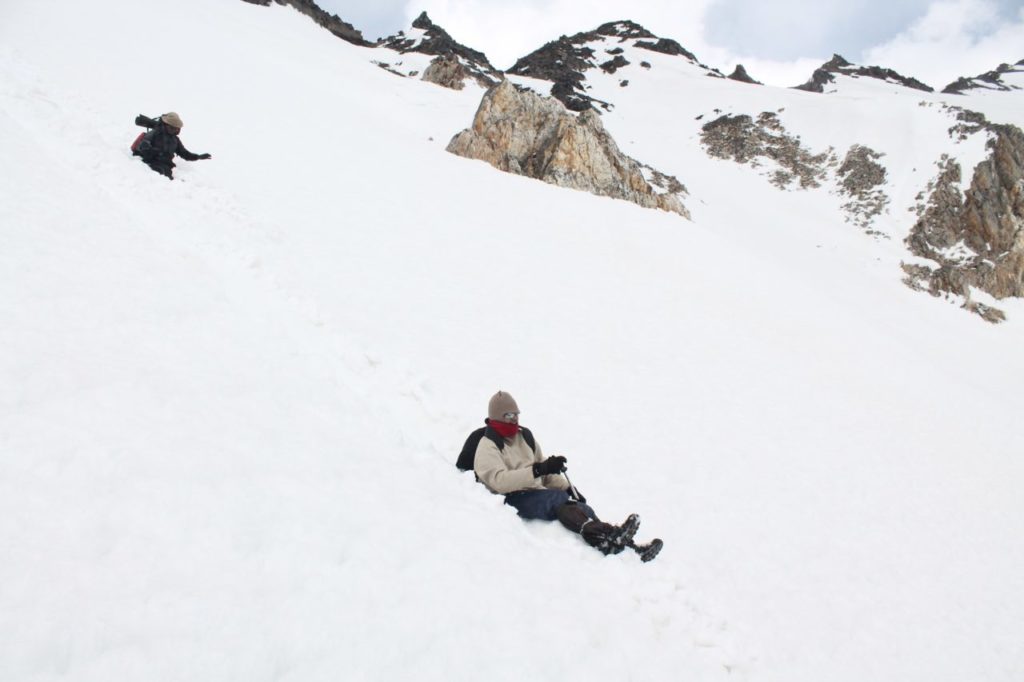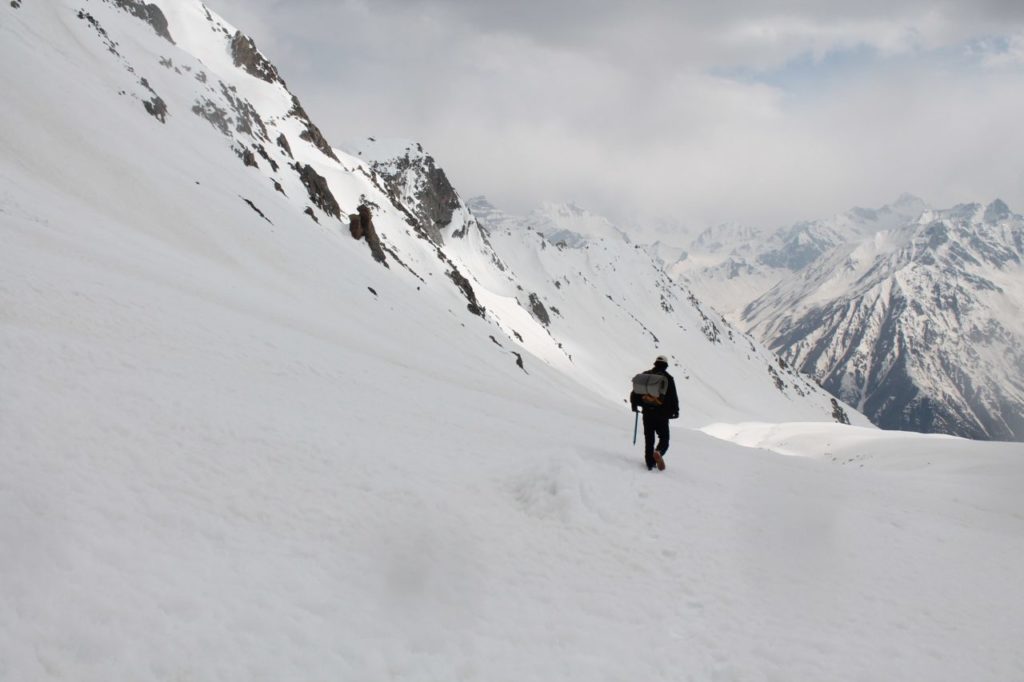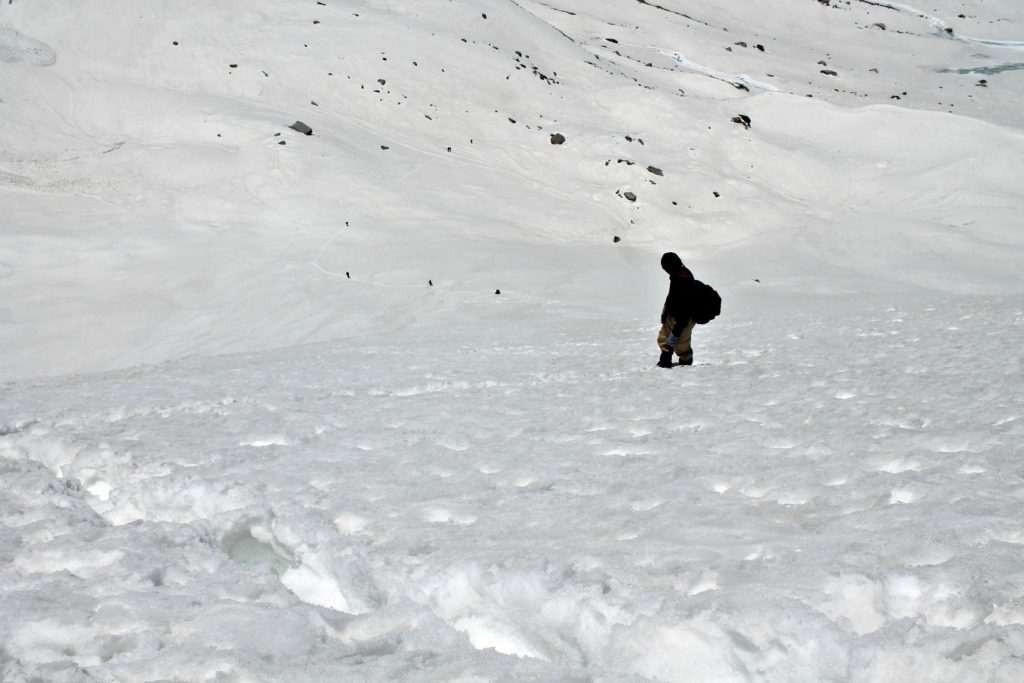Charang to Chitkul : Charang-La (Kinnaur Kailash Parikrama Trek)
Embarking on the Kinner Kailash Parikrama trek is delving into the heart of the Indian Himalayas, specifically the remote wilderness of Himachal Pradesh's Kinnaur region. This area, nestled near the Indo-Tibetan border, offers an immersive experience amidst breathtaking landscapes and cultural richness. The majestic Mt. Kinner Kailash stands as a sacred pinnacle, overseeing the Sutlej River's origin from the slopes of Kailash Parvat, a site with spiritual and picturesque allure. Kinnaur's allure stems not just from its stunning vistas but also from its fusion of Hinduism and Buddhism. The pagoda-style architecture and presence of monasteries reflect this unique blend, adding to the region's mystique. However, given its proximity to Tibet, the area requires foreign nationals to secure permits from tourism authorities due to its sensitive border status. For devotees of Lord Shiva, Kinnaur holds profound significance as one of the mythical abodes of the deity. Mt. Kinner Kailash boasts a remarkable 79-foot-tall Shivlinga, renowned for its mesmerizing color changes with each passing moment. Undertaking the Kinner Kailash Parikrama trek is not merely a physical journey; it's a test of faith, mental fortitude, and physical endurance. As pilgrims traverse the path, they're treated to unparalleled vistas of meadows, apple orchards, hanging glaciers, and towering peaks. Yet, this beauty comes with challenges—treacherous trails, daunting boulder climbs, narrow paths strewn with loose gravel, and traversing large water streams. The trek commences from Thangi village near Chail and winds its way through the scenic Charang Village, culminating in Manali via Chitkul, Tabo, and Losar after traversing the high mountain pass of Charang La, standing boldly at an altitude of 17,200 ft. above sea level. This journey is more than just a physical odyssey; it's a spiritual and cultural immersion amidst the raw, untamed beauty of the Himalayas.
Kinnaur Kailash Trek Cost Includes / Excludes
- All arrangements for overnight stays during the trip.
- Camping and Climbing gear.
- All food expenses
- Food will usually consist of morning breakfast, lunch, evening high tea, and dinner.
- All food will be vegetarian.
- Trained and certified guides trained for emergency situations.
- Local guides and workers with in-depth knowledge about the local area.
- One luggage per person will be transported by us.
- Inner line permits and arrangements en route will be arranged by the operator.
- All stays and lodging on a twin sharing basis shall be provided.
- Any kind of personal expenses.
- Camera fees or any other costs arising out of unforeseen circumstances and situations beyond our control.
Daywise Itinerary of Kinner Kailash Trek
Arrival welcomes you, followed by a scenic drive traversing Kufri, Narkanda, and Reckong Peo en route to Charang. The journey from Shimla to Charang unveils picturesque landscapes featuring the awe-inspiring Phawarang peak (6050 m) and the stunning Rangrik range. By evening, you’ll arrive at Charang, where lodging arrangements, either in a homestay or rented accommodation, will be made for your stay.
Village walk, a visit to Rangrik monastery, and the last ITBP post on the Indo-Tibetan border. Explore the places around Charang and pay a visit to the Rangrik Monastery. Overnight stay in the village homestay or camping.
Trek FAQ's
- Tangling village-Gufa-Kinner Kailash Shivling route.
- Ribba village-Parvati Kund-Kinner Kailash Shivling route.
- Purbani village-Parvati Kund-Kinner Kailash.
As per the Himachal Pradesh Miscellaneous Adventure Activities Rules, 2017 any trekking activity in the district has to be carried out with prior permission from the tourism office and camping permission for the trek is to be obtained from the forest department.
Deputy Commissioner, Kinnaur

